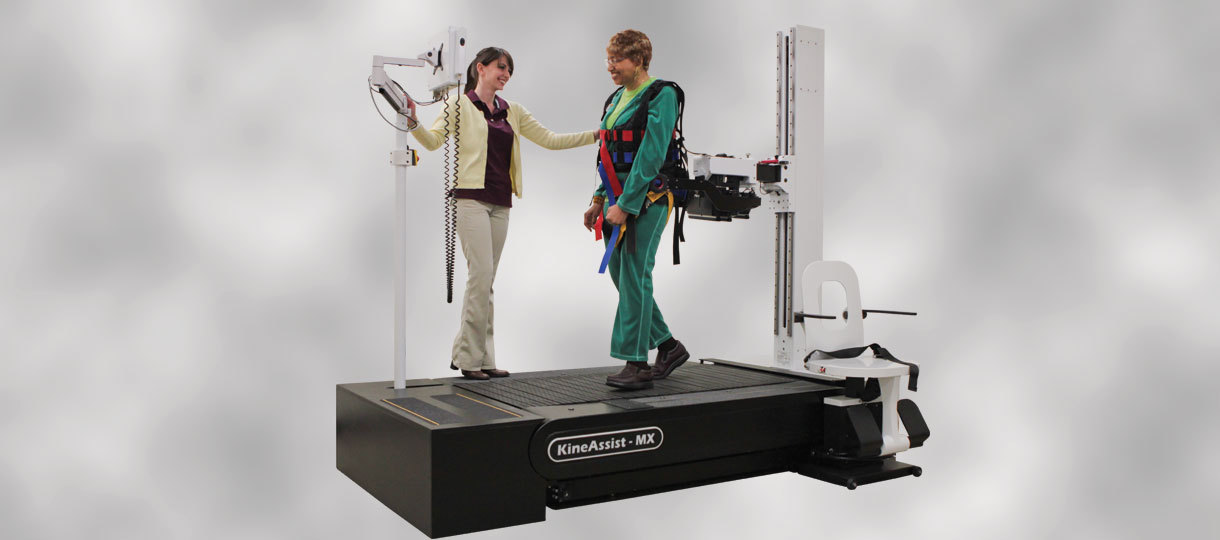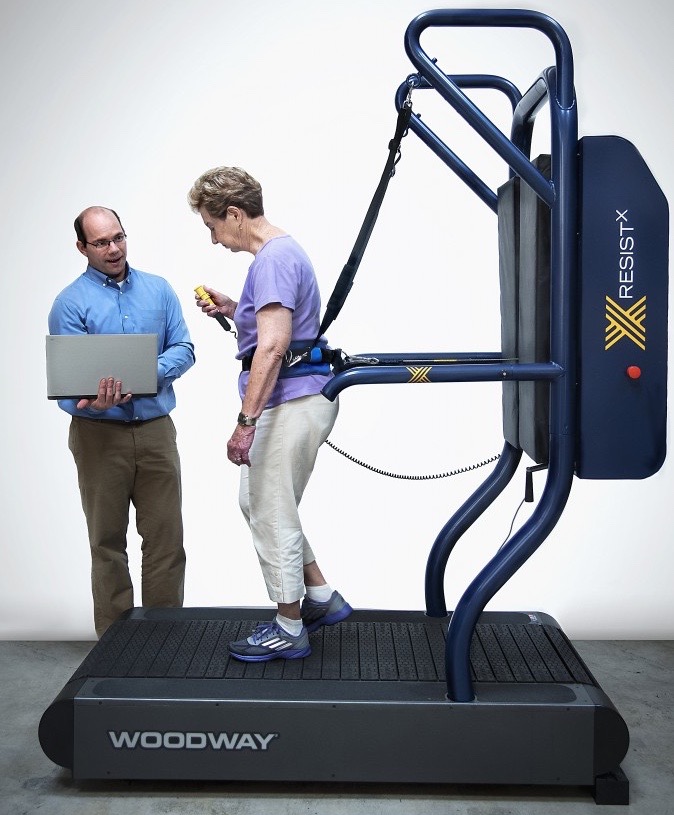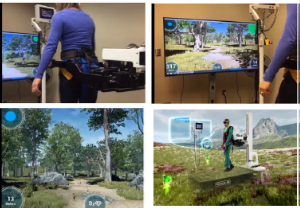Project Overview:
Body
Principal Investigator: David A. Brown, PT, PhD, (University of Alabama at Birmingham)
Co - Investigators: Julio Santos, MS, (HDT Robotics); James Rimmer (UAB/Lakeshore Collaborative)
Synopsis/Goals of the Project
The KineAssist MX, was designed to measure deficits in four factors that impact balance and mobility, and also provide a challenging training environment to address each of these four factors by providing a unique ability to simulate over ground activities, specify force fields, provide standardized perturbations, and assure safety during highly challenging mobility tasks.
Project Aim #1: Utilize the KineAssist MX system to test the concurrent validity of a suite of assessments designed to measure force generating capability (FG); speed generating capability (SG), dynamic balance (DB), and response to locomotor challenge (LC) in stroke survivors.
Project Aim #2: Utilize the KineAssist MX system to test the effectiveness of a targeted, client-specific training program designed to improve walking speed and increase mobility participation.
What is the KineAssist-MX?
Body
 The KineAssist-MX is a robotic mobility device that allows clinicians to provide challenges to walking and balance for their clients with neurologic disorders. The device is now being marketed and sold to the Medical Community. Our current model was displayed at numerous professional conferences nationally and internationally.
The KineAssist-MX is a robotic mobility device that allows clinicians to provide challenges to walking and balance for their clients with neurologic disorders. The device is now being marketed and sold to the Medical Community. Our current model was displayed at numerous professional conferences nationally and internationally.
For more detailed information (scientific publications, etc.):
-
See video HERE
-
Dionisio, V. C., Brown, DA. Collaborative robotic biomechanical interactions and gait adjustments in young, non-impaired individuals. Journal of Neuroeng and Rehabil., 2016; 13(1).
-
Hurt CP, Burgess JK, Brown DA. Limb contribution to increased self-selected walking speeds during body weight support in individuals poststroke. Gait & posture. 2015; 41(3):857-9. PMID: 25770079
Major Project Accomplishments:
Body
 Prototype for testing and training aerobic endurance
Prototype for testing and training aerobic endurance
A new prototype exercise device has been invented that can provide a less-expensive approach to walking training under horizontal resistive force conditions with safety. Filed under the auspices of UAB. This describes a new approach for testing and training aerobic endurance using horizontal forces applied to the pelvis as a method for generating defined work-rates during walking at any chosen speed on a treadmill.
For more detailed information (scientific publications, etc.):
-
Hurt, C. P., Bamman, M. M., and Brown, DA. Speed and incline-based vs resistance-based treadmill walking tests for determining cardiorespiratory fitness: Medicine and science in sports and exercise, 2016; 48 (5 Suppl 1), 673.
-
Hurt CP, Wang J, Capo-Lugo C, Brown DA: Effect of progressive horizontal resistive force on the comfortable walking speed of individuals post-stroke. J Neuroeng Rehabil. 2015 Feb 10;12(1):12. doi: 10.1186/s12984-015-0007-7. PMID: 25884953.
- Wang J, Hurt CP, Capo-Lugo C, Brown DA: Characteristics of horizontal force generation for individuals post-stroke walking against progressive resistive forces. Clin Biomech. 2015; 30(1):40-5. PMID: 25481856
Body
 Exergaming Adventure Walk
Exergaming Adventure Walk
In conjunction with the gaming-development company, From the Future, we have designed a new exergaming application that can be used by individuals who are learning to walk again using the KineAssist MX. This device is especially useful for people who enjoy being challenged in a fun and interesting manner when walking.
For more detailed information (scientific publications, etc.):
-
See video HERE
